Route Optimization APIs¶
Introduction¶
The Goal in route optimization (Job Assignment & Route Optimization) is to get an optimal set of routes for a fleet of vehicles to traverse in order to deliver to a given set of customers. It generalizes the well-known travelling salesman problem (TSP).
The objective of this API is to minimize the duration, determine and minimize vehicles used & optimize the distance travelled(optimized route), so it can reduce the overall cost and provide maximum profit.
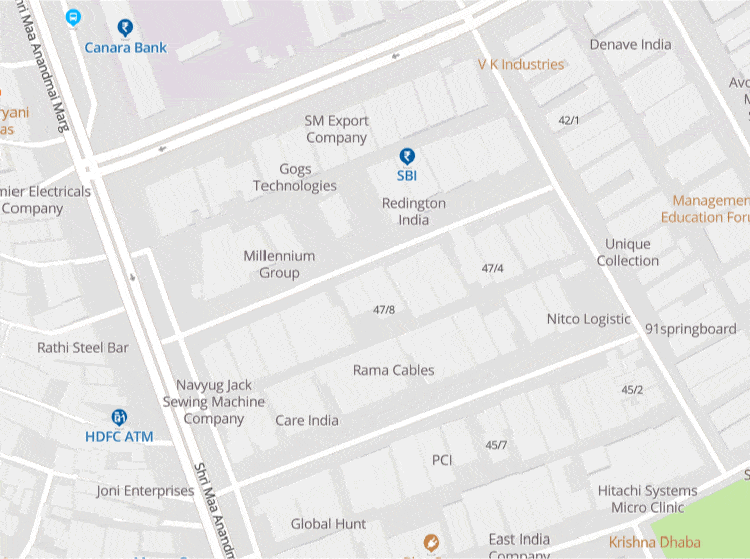
Constraints¶
vehicles¶
- Number of Vehicles
- Profile
- Vehicle Capacity
- Break Time
- Skills
- Time Window
- Maximum Travel Time
- Maximum Tasks
- Cost
jobs¶
- Time Window
- Service Time
- Delivery/Pickup Capacity
- Skills
- Priority
shipments¶
- Time Window
- Service Time
- Setup time
- Delivery/Pickup Capacity
- Skills
- Priority
- Amount
Route Optimization Variants¶
-
Travelling Salesman Problem(TSP) - This is basically Route Via point Sequencing.
-
Capacitated Route Optimization - The vehicles have a limited carrying capacity of the goods that must be delivered. It can be single or multi quantity dimensions(e.g. volume, weight, number of packets etc.)
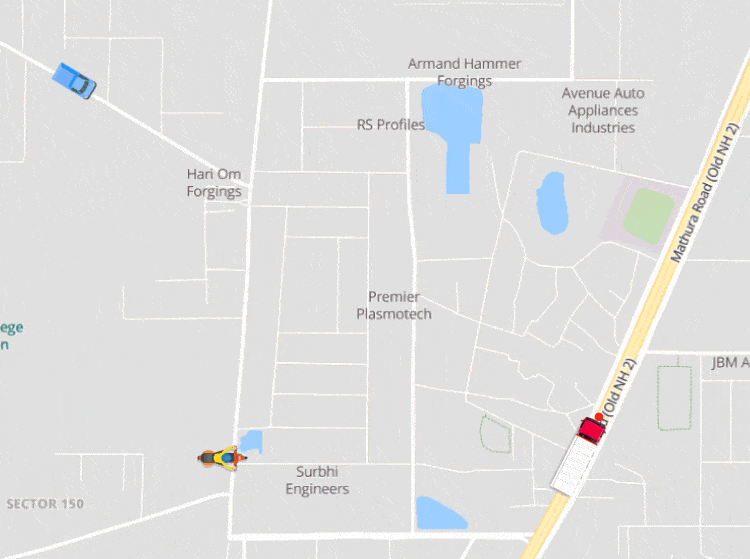
-
Route Optimization with Time Windows - The delivery locations have time windows within which the deliveries (or visits) must be made.
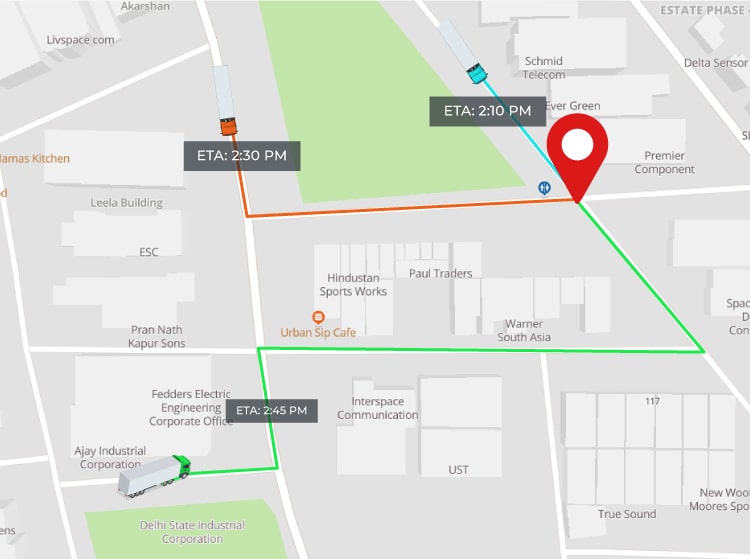
- Route Optimization with Profits/Priority - A maximization problem where it is not mandatory to visit all customers. The aim is to visit once customers maximizing the sum of collected profits while respecting a vehicle time limit. Vehicles are required to start and end at the depot.
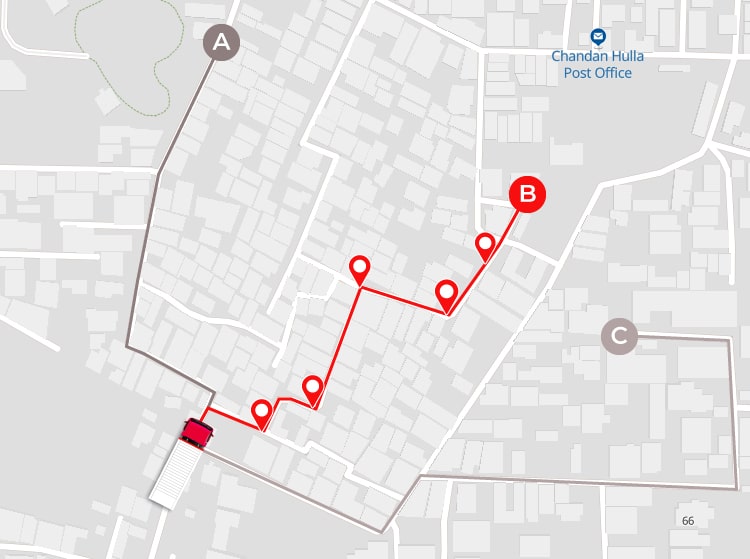
- Route Optimization with Skill Sets - List of vehicle skill(s). A delivery/pickup can only be served by the vehicle if its required skills is a subset of vehicle skills.
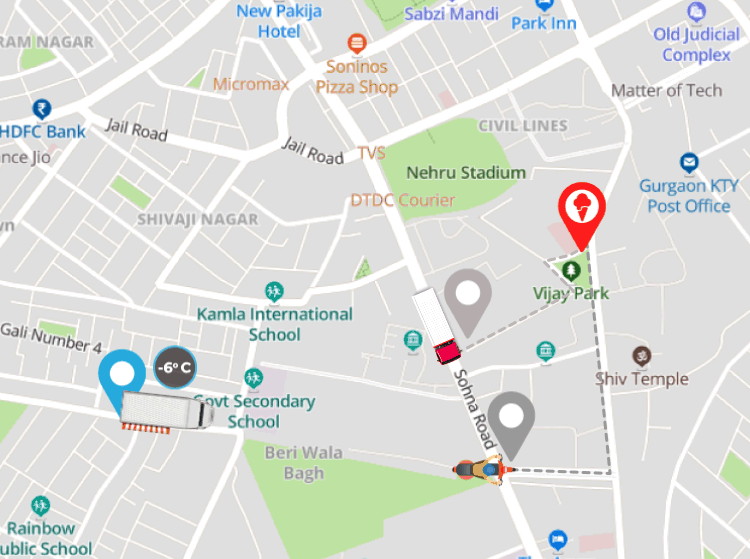
Input¶
Format: JSON
| Key | Description |
|---|---|
vehicles |
array of vehicle objects describing the available vehicles |
jobs |
array of job objects describing the places to visit |
shipments |
an array of shipments objects describing pickup and delivery tasks |
Vehicles¶
Bold ones are mandatory; italic ones are optional parameters.
A vehicle object has the following properties:
id(integer): assigned unique id for the vehicle.profile(string): routing profile includes "driving", "biking" & "trucking" (defaults todriving). Only needed as input in the first vehicle, for the remaining vehicles same profile will be used. Currently mixed profiles are not supported.description(string) : a string describing this vehicle.start(float) : coordinates array of the start position.end(float) : coordinates array of the end postion.capacity(integer) : an array of integers describing multidimensional quantities.skills(integer) : an array of integers defining skills.time_window(integer) : atime_windowobject describing working hours.breaks: an array ofbreakobjects.id(integer) : id defined for thebreaks.time_windows(array) : an array oftime_windowobjects describing valid slots for break start.service(integer) : break duration (defaults to 0).description(string) : a string describing this break.max_tasks(integer): Defines the maximum number of tasks in a route for this vehicle.max_travel_time(integer): Defines the maximum travel time for this vehicle.
Note: An error will be reported if two break objects have the same id for the same vehicle.
Jobs¶
Bold ones are mandatory; italic ones are optional parameters.
It is assumed that all delivery-related amounts for jobs are loaded at vehicle start, while all pickup-related amounts for jobs are brought back at vehicle end.
A job object has the following properties:
id(integer) : Unique id assigned to job.description(string) : A string describing this job.location(array) : Coordinates array of job location.service(integer) : job service duration (defaults to 0).delivery(integer) : An array of integers describing multidimensional quantities for delivery.pickup(integer) : An array of integers describing multidimensional quantities for pickup.skills(integer) : An array of integers defining mandatory skills.priority(integer) : An integer in the[0, 100]range describing priority level (defaults to 0).time_windows(array) : An array oftime_windowobjects describing valid slots for job service start.
Note: An error is reported if twojobobjects have the sameid.
Shipments¶
Bold ones are mandatory; italic ones are optional parameters.
A shipments object has the following properties:
pickup(object): object describing pickup shipments step.id(integer): unique ID of the shipments step.description(string): a string describing this steplocation(array): coordinate pair [lon,lat]setup(integer): task setup duration (defaults to 0)service(intger): task service duration (defaults to 0)time_windows(array): an array oftime_windowobjects describing valid slots for task service start
delivery(object): object describing delivery shipments step.id(integer): unique ID of the shipments step.description(string): a string describing this steplocation(array): coordinate pair [lon,lat]setup(integer): task setup duration (defaults to 0)service(intger): task service duration (defaults to 0)time_windows(array): an array oftime_windowobjects describing valid slots for task service start
amount(array): an array of integers describing multidimensional quantitiesskills(array): an array of integers defining mandatory skillspriority(integer): an integer in the[0, 100]range describing priority level (defaults to 0)
3.A shipments Step¶
A shipments_step is similar to a job object (expect for shared keys already present in shipments)
An error is reported if two delivery (or pickup) objects have the same id.
Notes¶
- It is assumed that all delivery-related amounts for jobs are loaded at vehicle start, while all pickup-related amounts for jobs are brought back at vehicle end.
- An error is reported if two
jobobjects have the sameid. - the expected order for all coordinates arrays is
[lon, lat] - all timings are in seconds(except "computing_times" in output is in miliseconds)
- all distances are in meters
waiting_timeis calculated on the earliness factor, It means if a vehicle has arrived before the time_window of the job to be performed then the wait between the start time (in time_window) and arrival time(of vehicle) iswaiting_time.costvalues in output are the one used in the optimization objective (currently equal to duration)- key
startandendare optional for a vehicle, as long as at least one of them is present - if
endis omitted, the resulting route will stop at the last visited task, whose choice is determined by the optimization process - if
startis omitted, the resulting route will start at the first visited task, whose choice is determined by the optimization process - to request a round trip, just specify both
startandendwith the same coordinates
Capacity restrictions¶
Those arrays can be used to model custom restrictions
for several metrics at once, e.g. number of items, weight, volume
etc. A vehicle is only allowed to serve a set of tasks if the
resulting load at each route step is lower than the matching value in
capacity for each metric. When using multiple components for
amounts, it is recommended to put the most important/limiting metrics
first.
Skills¶
Use skills to describe a problem where not all tasks can be served
by all vehicles. Job skills are mandatory, i.e. a job can only be
served by a vehicle that has all its required skills. In other
words: job j is eligible to vehicle v iff j.skills is included
in v.skills.
In order to ease modeling problems with no skills required, it is
assumed that there is no restriction at all if no skills keys are
provided.
Task priorities¶
Useful in situations where not all tasks can be performed, to gain
some control on which tasks are unassigned. Setting a high priority
value for some tasks will tend as much as possible to have them
included in the solution over lower-priority tasks.
Time windows¶
- absolute values, "real" timestamps. In that case all times reported in output with the
arrivalkey can be interpreted as timestamps.
The absence of a time window in input means no timing constraint
applies. In particular, a vehicle with no time_window key will be
able to serve any number of tasks, and a task with no time_windows
key might be included at any time in any route, to the extent
permitted by other constraints such as skills, capacity and other
vehicles/tasks time windows.
- In vehicles: time_window is the working hours in which jobs can be performed.
- In break(part of "vehicles"): time_window is an array describing valid slot(s) for break start. It means break must start between the given time_window but duration can exceed the endtime given in time_window.
Asynchronous API Call¶
At first input(vehicles & jobs) is given via POST Request which will provide a requestID which then needs to pass through a GET Request to get the status or the desired output of Route Optimization. So in this asynchronous call you do not halt all other operations while waiting for the API call to return.
The details of POST and GET request of the API are given in the separate documents.
Output Description¶
Format: JSON
response¶
The response object has the following properties:
| Key | Description |
| ----------- | ----------- |
| summary | object summarizing solution indicators | |
| routes | array of route objects |
| unassigned | array of unassigned objects |
1. Summary
- duration : total traveled time for all routes.
- delivery: total number of delivery points for all routes.
- cost : total cost for all routes.
- computing_times: time in seconds taken for the output (for internal purposes only).
- routing
- total : sum of routing, solving and loading
- solving
- loading
- distance: Total calculated distance for all routes.
- waiting_time : Total waiting time for all routes.
- service : Total service time for all routes in seconds.
- violation :
- pickup: Total number of pickup for all routes.
- unassigned : Number of tasks that could not be served.
- priority : Total priority sum for all assigned tasks.
2. Routes
- delivery: Total number of delivery points for tasks on this route.
- cost: Cost for this route.
- distance: Total distance of this route.
- waiting_time : Total waiting time for this route.
- violations :
- description: Vehicle description (if provided in input).
- pickup: Total number of pickup tasks on this route.
- priority : Sum of priority assigned for tasks on this route.
- steps :
- duration : Cumulative travel time upon arrival at this step.
- load: Vehicle load after step completion (with capacity constraints).
- distance : Traveled distance upon arrival at this step.
- waiting_time : waiting time upon arrival at this step.
- arrival : Estimated time of arrival at this step.
- service : Service time invested at this step.
- description step description (if provided in input).
- location: Coordinates array for this step (if provided in input).
- id: id of the task performed at this step, only provided when type value is given as job, pickup, delivery or break
- type: a string (either start, job, pickup, delivery, break or end)
- job:
- vehicle : id of the vehicle assigned on this route.
- duration: Total traveled time on this route.
- service : Service time invested on this route.
- geometry: Encoded polyline route geometry of this route.
3. Unassigned : unassigned job,vehicle and shipment on this route
- location - location of the vehicle/job/shipment whichever is unassigned
- id - id of the unassigned job/vehicle/shipment
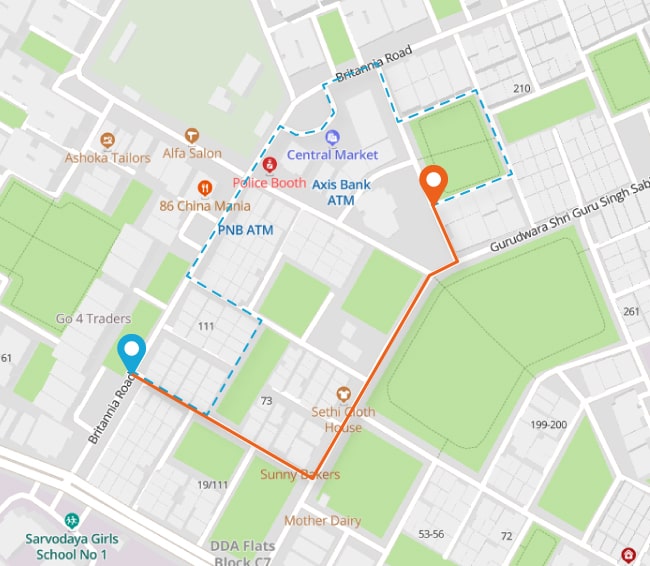
For any queries and support, please contact:
Email us at apisupport@mapmyindia.com![]() Support
Need support? contact us!
Support
Need support? contact us!
